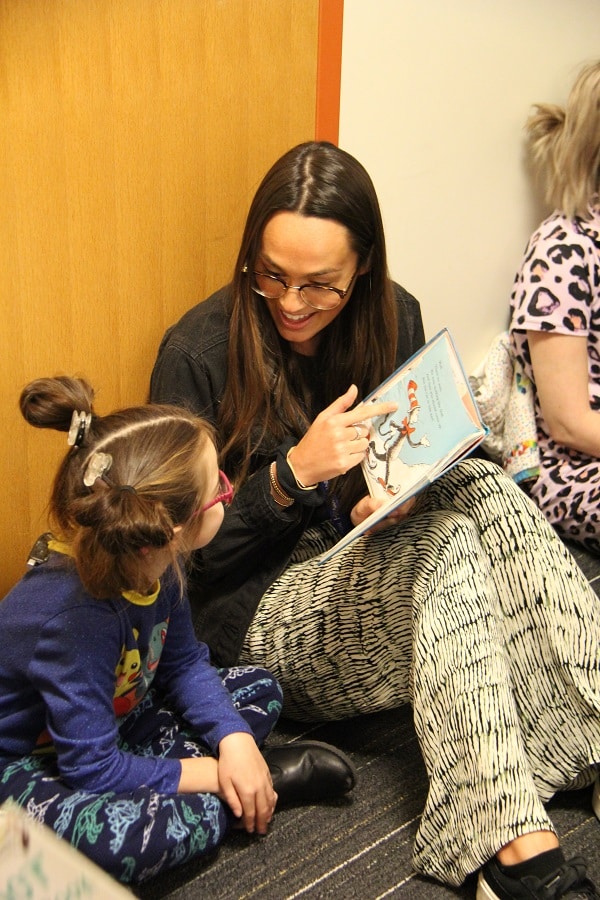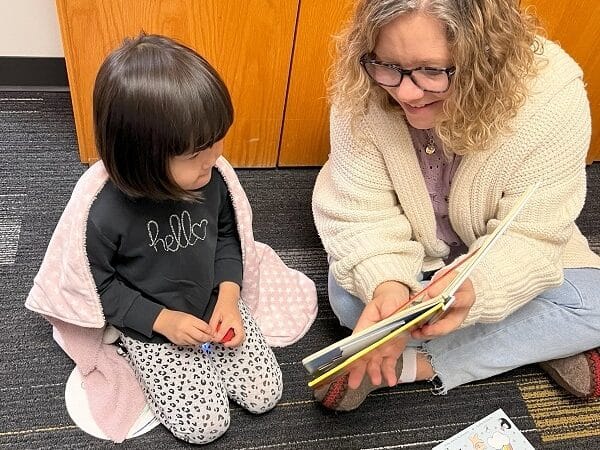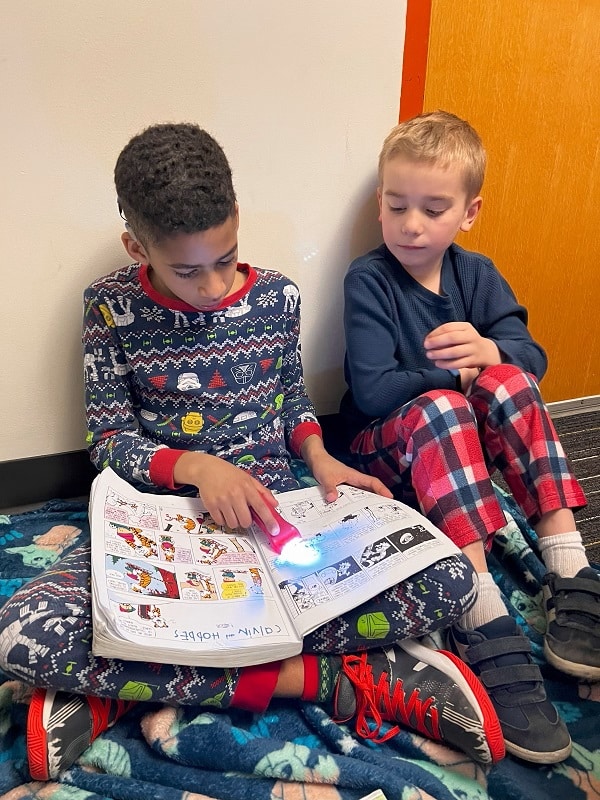The Importance of Literacy for Children Who are Deaf, Hard of Hearing, or with a Severe Language Disorder
By Sara Baines-Miller | Posted on: February 29, 2024

Our Goal is to Get Students at the Same Literacy Level as Their Hearing Peers
Children who are deaf, hard of hearing, or with severe language disorders learn to listen and speak at DePaul School. The students ultimately transition to their neighborhood schools with the foundation to succeed.
Did you know that a child’s vocabulary and testing are greatly improved by having their parents/guardians read aloud to them? In this article, we’ll discuss the importance of literacy with eight read aloud tips. But first, let’s go over why reading aloud is important.
Why is Reading Aloud Important?
Reading aloud is a valuable activity that lends to a child’s overall development and lays the foundation for a continual love of reading and learning. Reading to a child who is deaf, hard of hearing, or with a severe language disorder is crucial to their language development.
Here are some reasons to establish a good reading routine with your child:
- Language Development – Reading aloud helps children develop language skills by uncovering a wide range of vocabulary, sentence structures, and literary styles. It enhances their ability to understand and use language effectively.
- Cognitive Development – Reading aloud stimulates brain development, especially in young children. It helps improve cognitive functions such as attention, memory, and comprehension.
- Literacy Skills – Reading aloud lays the foundation for literacy by fostering a love for books and reading. It introduces children to the mechanics of reading, such as left-to-right progression, punctuation, and word recognition.
- Communication Skills – Reading aloud encourages communication and interaction between the reader and listener. It provides discussion opportunities about the story, characters, and themes, promoting critical thinking and comprehension skills.
- Bonding and Connection – Reading aloud creates a special bonding experience between the reader and the listener, whether it’s a parent reading to a child or a teacher reading to students. It fosters emotional connections and strengthens relationships.
- Fluency and Expression – Reading aloud helps improve fluency and expression in reading by modeling proper pronunciation, intonation, and pacing. It allows listeners to hear the rhythm and flow of language, enhancing their reading skills.
Eight Read Aloud Tips
1-Make it Fun and Interactive
Choose a comfortable location to read. Perhaps snuggled under a warm blanket at bedtime or outside on the hammock under a shaded tree. Wherever you decide, make sure your environment is suitable for everyone’s needs. Incorporating interaction into reading time allows for a relaxed and fun situation that kids will continue to look forward to.
2-Choose Different Types of Books
While repeat reading is completely fine and encouraged, it’s also good to incorporate different types of books during reading time. If your child is learning to read, try taking turns reading the pages with an age-appropriate book. Alternatively, read books about nature and animals or space and the ocean. These books typically offer beautiful photographs and lots of talking points. Or take a stab at a chapter book and watch your child’s imagination come alive as they fantasize about the characters and scenarios. Switching up the books you read can be fun, encouraging, and thought-provoking.
3-Give Child-Friendly Definitions
Often when reading, a word will pop up that your child doesn’t understand. This is a great learning opportunity to explain the word’s definition. Just make sure that you use child-friendly explanations and understand that while they may not grasp the definition entirely, they will still have a good foundation to work from.
4-Highlight Language Structures
The pattern and rules that govern how words and phrases are organized are called language structure. A typical word order is subject-verb-object, for example, “The dog (subject) climbed (verb) the stairs (object).” Try making this into a fun game and have your child find the subject, verb, and object in some of the sentences you read.
5-Play with Sounds and Rhymes
The author intentionally includes sounds and rhymes as a way to engage and entice the listener. Emphasizing sounds with your voice and body language encourages interactive story time.
Rhyming stories enable children the opportunity to guess similar-sounding words as they listen. They may not always get it right, but their ears will be trained to expect a similar-sounding word.
6-Ask Open-ended Questions
Open-ended questions spark detailed and thoughtful responses beyond the simple yes or no answers. These questions can lead to deeper discussions about the book, and even inspire opinions, feelings, and imagination. What a perfect way to bond over reading!
7-Make Connections
Using stories to make real-world connections is priceless! Whether it’s a similar situation, a relatable character trait, or comparable conflict/resolution, books can offer practical connections. If you notice a connection when reading, use that opportunity to discuss it.
8-Pair Fiction with Nonfiction
Reading different types of writing offers an exciting exploration into the many genre varieties. Take turns reading fiction and nonfiction stories, or explore a genre like historical fiction, and discuss what’s true and untrue in the story. Being able to differentiate between fiction and nonfiction is a great reading and writing skill to master.
Have Questions? Contact Us!
Reading aloud is a valuable and fun activity that lends to a child’s overall development and love of reading and learning. If you have questions on read aloud tactics or general school inquiries, please reach out to us. We look forward to speaking with you!
Share This Article:


